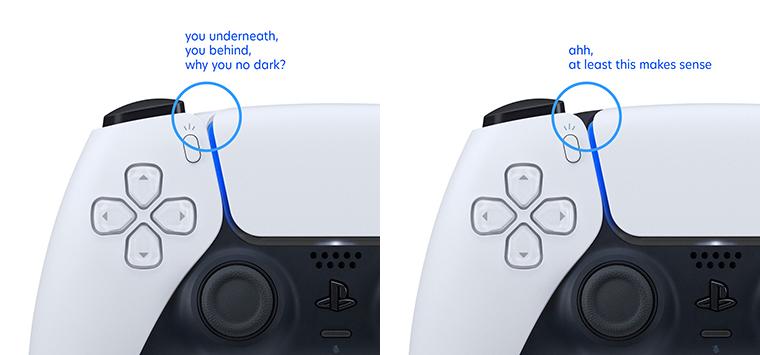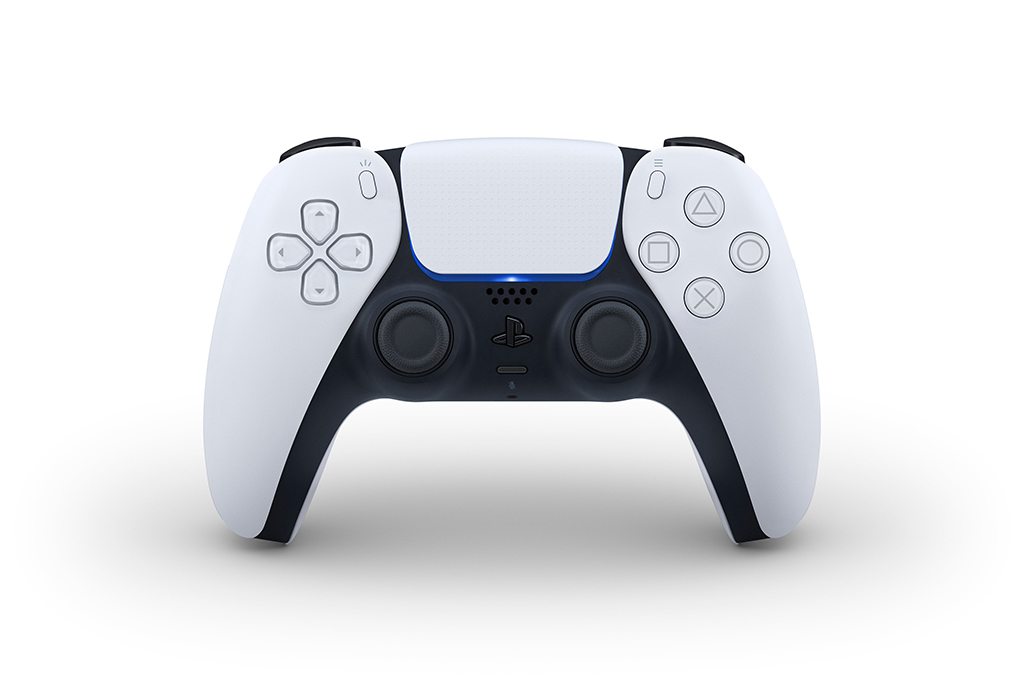Yes, I did change the concept of a dark core with a white plating around, but the thing is I feel like not even sony embraced that concept fully. As in, if the core is supposed to be dark, then why is the top area
behind the plating not dark as well?
If the idea is that of a dark core with white plating, this would make much more sence:
But even them, the design feels a little unsure of itself. The black core kind of morphs into a glowing blue, but that glowing blue itself subdivides into a non-glowing transparent dark over the matte dark part. What is the hierarchy of forms and substances in here? It has not fully decided.
Here would be an example (a very rough and admitedly not very pretty one) of what a design that is more well decided on its intent of the dark core with white plating:
This fully embraces the curvy design language, the japanese bot-like forms, and everything. I don't really particularly like this solution, and proportions and form definetly could do with a lot of adjusting, but I use this to exemplify intent. This at least has more well-decided intent.
Maybe all the curvyness is not so good, maybe you want some sharp angles, and a thinner slit where the shells meet. Well the, fully embrace THAT design language and go all-in on it:
Now here things are well defined. The dark core has a coherent form, the white plating fits together like puzzle-pieces, and the LED strip doesn't seem lost in the middle of an undefined confusion.
Again, my mockups are quick rough-drafts I threw together to exemplify my points. I'm doing this for free on spare time (thanks corona enduced unemployment) but they try to adhere to a coherent and consistent design language. My problem with sony's design, is that it kind of feels like a mish-mash of some of the ideas of each mock-up I did. Almost like they prototyped stuff similar to mine, and couldn't decide on one direction to go with it, so they put everything in the blender and came out with something that is incosistent.







